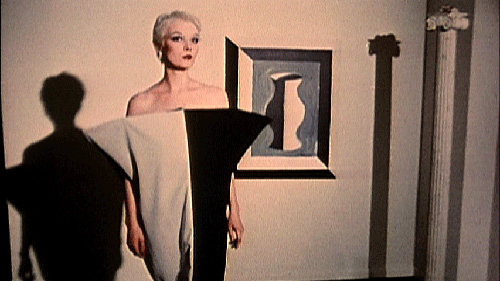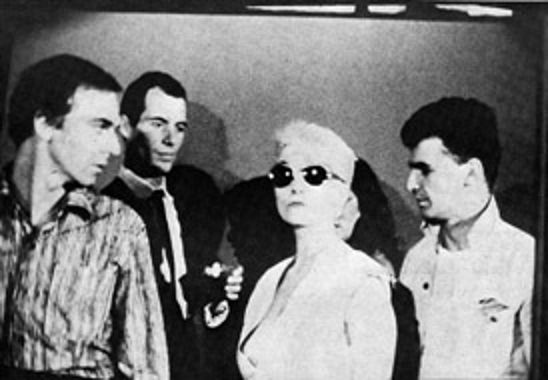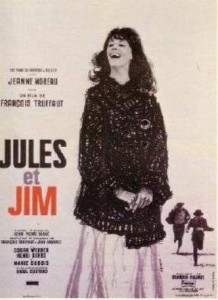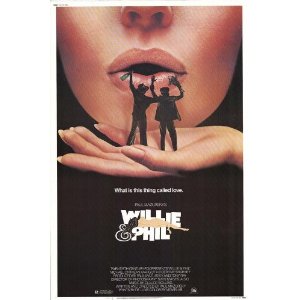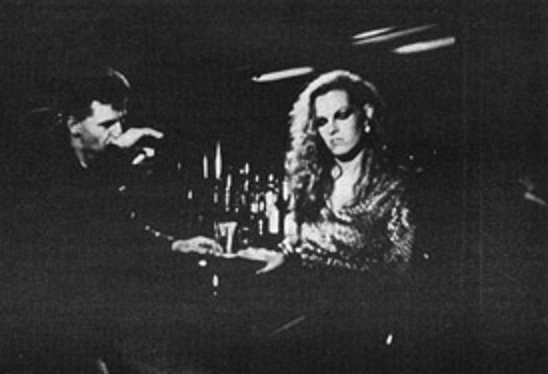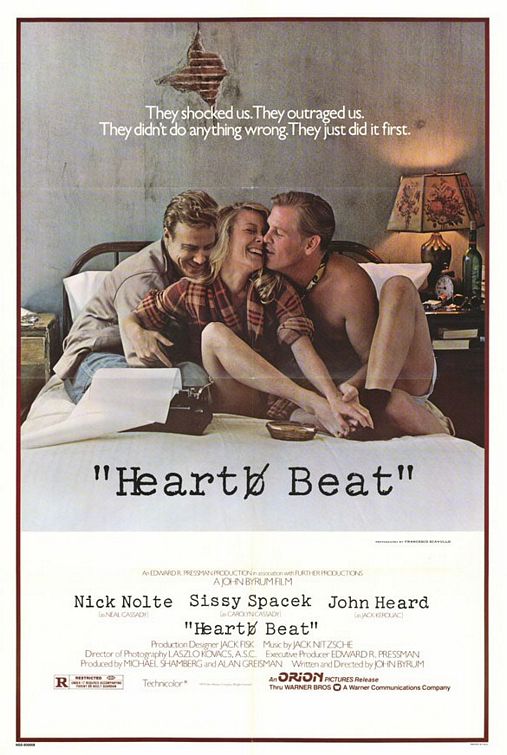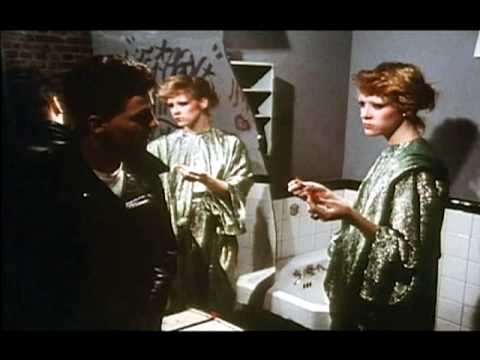From The Soho News (June 11, 1980). Note: The “Hollywood assistant” quoted below was Meredith Brody, working at the time for A-Team. — J.R.
Underground U.S.A.
A film by Eric Mitchell
St. Mark’s Cinema, midnight
“Sometimes I think most of the ’70s is being spent in
cars, discussing remakes,” a Hollywood assistant once
woefully remarked to me. She didn’t know how lucky she
was. Sometimes, in my less happy moods, I think that
most of the 80s will be spent in theaters, watching the
same remakes that were being discussed in the ’70s.
Willie & Phil –– Paul Mazursky’s remake of Jules and
Jim, set in the American ’70s — isn’t opening for a couple
of months yet. John Carpenter’s The Fog and several
other recent quickies have already remade Carpenter’s
Halloween, which was itself a partial remake of The Thing
(which Carpenter is now planning to remake more directly).
And to round off this minisurvey of new, original
thinking (if you want to exalt the conventional, call it
classical), the new Eric Mitchell film, the l6mm
Underground U.S.A., which already sounds like a remake
of Sam Fuller’s Underworld U.S.A. — is actually
described in its own pressbook as a remake of a remake:
“Taking the classic theme of Sunset Boulevard seen
through Heat,” Underground U.S.A. ”tells the tale of the
end of a superstar of the ’60s, and the dissolution of an era
when everyone thought they had a chance to be a star.”
Mitchell’s fashionable punk feature was playing to a
packed house, extra folks choking the aisles, when I
caught it last weekend at the Theater for the New City,
site of the old Gate Cinema before moving to St. Mark’s
Cinema. What new city, one wonders, could possibly
grow out of these ashes? I can’t deny, though, that
Underground U.S.A. is attractively shot (by Tom Di
Cillo) in rich, chalky colors that are beautifully lit, and
that a few striking moments flare across its features.
Much of the latter can be charged up to some deft, fleeting
mime from Taylor Mead in the opening sequence. and
some rock and punk records that are used to accompany
various long takes.
***
Several viewers have already suggested that Eric
Mitchell’s third feature (after Kidnapped and Red Italy,
the latter of which echoes a few scenic effects from
Antonioni and Fellini, “remakes” Fassbinder, and I must
confess that the cross-reference that sprang to mind most
often wasn’t Heat or Sunset Boulevard, but
Katzelmacher. Deliberately or not, both movies are a lot
about poses and posing — standing still for the portrait
maker — and the boredom that inevitably arises from this
work. I think it’s relevant to what bothers me about
Underground U.S.A. that Mitchell could turn to a
conservative, defeatist cynic like Fassbinder — the W.C.
Fields of the new German cinema -– for his inspiration.
(If European punk insolence is what he’s after, he might
have settled on something tougher, like the work of Chantal
Akerman — who is not so much the Nancy as the two-
fisted Sluggo of the movement. )
The over-familiar plot, whereby a wealthy ex-star (Patti
Astor) picks up a hustler (Eric Mitchell)’ pretends to
launcha comeback, fails, and takes a lot of pills and
booze, isn’t so much delineated this time around as
periodically referred to, in order to keep the movie going.
At no point does it seem to carry much conviction for the
actors involved, most of whom seem happier when
they’re merely asked to stand (or lie) still, and the
dramatic burden is assumed by rock and punk records.
As with Heart Beat (a “remake” of On the Road), one
often feels that most of the director’s mental energy is being
spent composing specific camera setups, and that
most of the ideas in the film come from the separate shots,
not from whatever unity lies between them. One also feels
that Mitchell is relatively in command –- dramatically,
filmically — every time he lets an old pro actor likeMead
or a snazzy single dictate the movie’s own heartbeat. (It
seems significant that the high point of Red ltaly occurs
when “Be-bop-a-lou-la” is on the soundtrack.) Yet he
seems to be at a distinct loss every time his script and/or
his less resourceful actors — including Astor and Mitchell
himself — have to ply their way through arhythmic
vacuum. The actors don’t know what to do at these moments,
the words won’t tell them, and spectators often fidget
through these awkward pauses, too, helped along
by an occasional half-uncertain giggle.
***
One could theoretically find (and, I suppose, look for)
“deconstructive” virtues in this sort of enterprise, and
argue that Mitchell is burying the joint legacies of Billy
Wilder (Sunset Boulevard) and Paul Morrissey (Heat)
by reproducing affectless versions of each, rather like Andy
Warhol. One could also find, perhaps, some punk virtue
in the acute physical discomfort that seems to inflict most
of Mitchell’s characters — signs of unresolvable frustration
that are reproduced in the spectator’s own restlessness.
(“Fun’s not fun after a point,” Rene Ricard remarks
to Astor in a dimly lit bar that might be the Mudd Club. ” l
never have any fun’” are Mitchell’s closing words in the
film, and I believe him.)
The trouble with this argument — as well as its seductiveness
— is that it excuses anything, fashion included. I’d rather point
out the interesting mise en scène conducted around objects
on a breakfast table., a lovely miniature spotlight trained on
Astor in the back of a dark limo, and the delightful conjunction
of a two-tone. light-and-shade painting and a similarly designed
dress at the star’s unattended champagne party. They at least gave
me something to hold onto, unlike the disintegrating
characters and plot.

